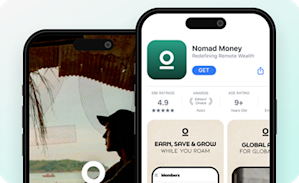Mighty Encyclopedia
Cohort-Based Course
What is a cohort-based course?
A cohort-based course is a program of learning that’s organized according to a syllabus (usually in sections) and is taken by a group of students (a cohort) at the same time. Cohort-based courses can take place online, in a virtual space, or in a physical classroom.
Cohort-based courses are familiar to many people as it is often the way traditional education, from elementary school to college or university, is structured: a group of students enters a class or course together, and over a specific period of time they go through the syllabus, together.

What is the difference between cohort-based courses and self-paced courses?
The time-bound nature of a cohort-based course along with the fact that students are mastering the material together is what differentiates it from a self-paced course where students can consume the course material alone and a course community is optional.
A cohort-based course is LIVE! Happening in real time. That means that a cohort-based course is synchronous learning. Because a cohort of students starts and finishes the course at the same time, they all move through the lessons together at the same time.
As a result, a cohort provides a more interactive, immersive experience for students, with members of the course sharing their own understanding and application of the course material with each other as they go. A cohort provides a higher likelihood that students will complete a course and be able to successfully apply the material.

In contrast, with a self-paced course, a student can start, pause, and finish the material on their own time and schedule. They may be on lesson one while another student is halfway through the syllabus. This does not happen in a cohort-based course.
While a self-paced course is available to more people, regardless of geography, they also have a lower completion rate by students and a lower probability that a member of a course can consume and apply the material successfully.
A variation of a cohort-based course offers the option for self-paced learning, assuming that some students in the same cohort may need to miss a class or a discussion here or there. But a completely self-paced course is not, by definition, a cohort-based course.

Advantages of a cohort-based course
There are a few things that make a cohort-based course unique.
Students can get real time help
You can adjust course topics to deal with challenges students have
You can integrate things like group work, communities, discussions, etc.
There's more accountability for the students
You can presell it to make sure it's profitable!
If you want to to know if a cohort-based course is right for you, we have more guidance here: A Guide to Synchronous vs. Asynchronous Learning
Cohort-based courses examples
Mighty Networks: Mighty Networks’ Community Design Masterclass is an online course that teaches students how to start and grow an online community, including how to structure it for engagement, how to attract paying members, and what content you need before going live. It is taught live and cohort-based, but also offers the option for self-paced learning.
Stanford: Stanford University’s MBA Program: This traditional university course brings a cohort of students together for classes, seminars, and projects related to earning their Master’s in Business Administration. It has both online and in-person elements.
Qpractice: This community brings aspiring interior designers together in cohorts to study for the NCIDQ exam, a certification that’s required for most practicing interior designers in North America.
Read More: How to Create a Cohort-Based Course
Build a $1 Million Community
This free masterclass went viral—sign up to learn why.





